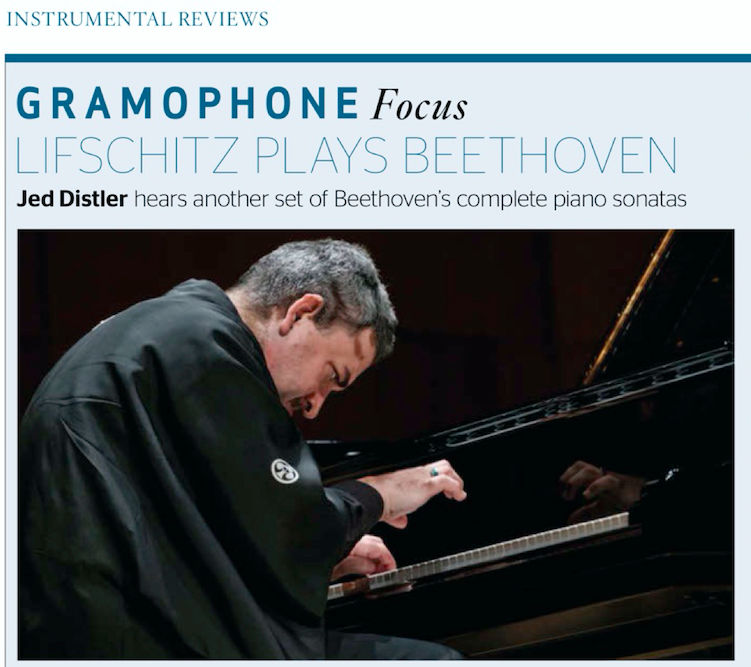Gramophone

Konstantin Lifschitz is the latest pianist to offer a Beethoven cycle to tie in with the composer’s 250th-anniversary year. These recordings of the 32 piano sonatas stem from recitals at the University of Hong Kong from September 2017 and April and July 2019, preserved in vibrant and lifelike sound with little hint of the attentive audience at the end of each sonata.
Lifschitz appears determined to leave his personal stamp on each piece by scrutinising details anew and bucking interpretative convention. Sometimes his efforts pay off handsomely, yet other times Lifschitz over-interprets. Consequently, his performances waver between revelation and contrivance, often within the same sonata.
The three Op 2 works hint at what to expect. Lifschitz pulls back No 1’s opening Allegro within monumentally moderato parameters, in contrast to the slightly miniaturised yet wonderfully lithe Prestissimo. No 2’s Largo is expansive to the point of being disjointed, while Lifschitz’s lily-gliding phrasing in the Rondo nevertheless conveys flow and continuity. The imitative counterpoint in No 3’s Scherzo is carefully calibrated, as are the finale’s annoying breath pauses after certain up-beats.
The opening movements of each of the Op 10 sonatas suffer from picky detailing, yet the astutely judged rests and ritards throughout the D major’s humourous Rondo keep one guessing. Conversely, Op 7’s Allegro dances at a jaunty, rollicking clip, replete with exciting dynamic ranges. Not much distinguishes Lifschitz’s Pathétique Sonata from dozens of excellent rivals, save for the slow-motion first-movement introduction. If outsize dynamics and protruding accents labour the obvious in Op 26’s first-movement variations, Lifschitz justifies the Funeral March’s massive gait through meticulous voice-leading and not pedalling through rests. The famous Moonlight Sonata Adagio lacks simplicity, while overarticulation drains the lilt from Op 28’s Rondo, although long-lined eloquence keeps the sedate Allegro afloat.
Likewise, the middle-period sonatas are hit and miss. Note Lifschitz’s wonderful comic timing of the ‘kerplopping’ chordal desynchronisations in Op 31 No 1’s Allegro vivace, while the Adagio grazioso grows increasingly amorphous as the caesuras and tenutos pack on the kilos, so to speak. The Tempest Sonata Allegretto‘s galloping gait dissipates due to Lifschitz’s telegraphing Beethoven’s subito dynamics. The Appassionata‘s first two movements add up underlined phrases, footnotes, sidebars and marginalia in search of narrative cohesion but the finale clicks into focus. In the Waldstein Sonata, Lifschitz checks all artifice at the door and allows the Allegro con brio to unfold patiently as a symphonic entity. He takes the Rondo’s controversial pedal-markings on faith, yet the left-hand scales somehow penetrate through the blur. In short, the pianist’s brilliant fusion of resonance and structure adds up to one of his cycle’s most gratifying interpretations. If Lifschitz bears a little too heavily on Op 78’s sforzandos, he fashions a pedantic blimp out of the slender, unpretentious Op 79. Perhaps the pianist’s Les adieux doesn’t score points for subtlety or sensitivity, but one must grant his astounding double-note technique.
Distinction and controversy inform Lifschitz’s late sonatas. He shines in Op 101, where he balances and controls the Scherzo’s tricky leaps and dotted rhythms to perfection. He brings cogent linear definition and poetic flexibility to the Hammerklavier‘s first movement, although the Scherzo is too emphatic and immobile. While the Adagio sostenuto is unusually slow and unrelentingly steady stretching out to a near-record 25’39” duration. I was mesmerised by Lifschitz’s rapt concentration and subtle inflections. He taps into the Op 109 Vivace‘s impetuous and improvisatory syntax, while carefully, unifying the third-movement variations’ tempo relationships. Controlled freedom also proves the key to the pianist’s rhapsodic yet never indulgent Op 110. Once past a seemingly interminable Maestoso introduction, Op 111’s Allegro proceeds at regulation speed. Again, Lifschitz’s intelligent tempo relationships bring clarification and unity to the Arietta and the variations, but the architectural thread weakens in inverse proportion to the pianist’s rhetorical gestures.
If Lifschitz’s Beethoven by turns illuminates and frustrates, his serious intentions and authentic voice are self-evident and far removed from the self-serving posturing Fazıl Say’s recent set (Warner Classics, 3/20). However, for consistency and insight from the younger generation, Igor Levit (Sony Classical, A/19) remains a firm recommendation.

